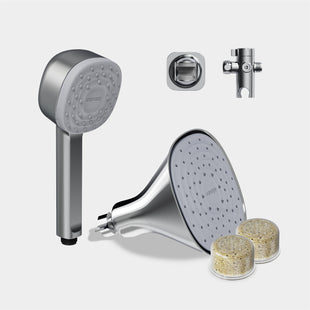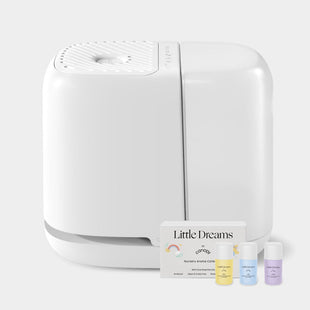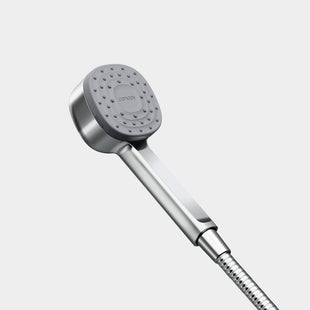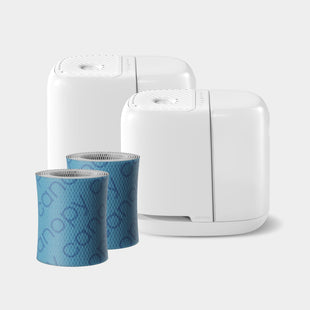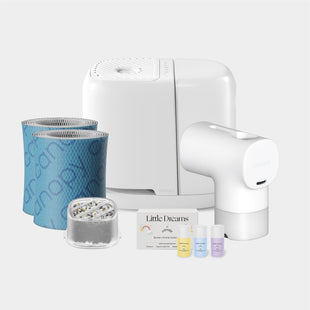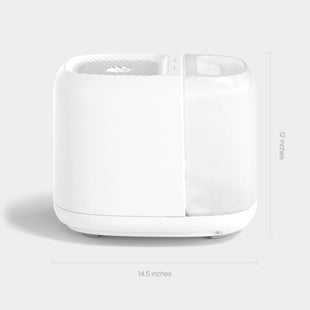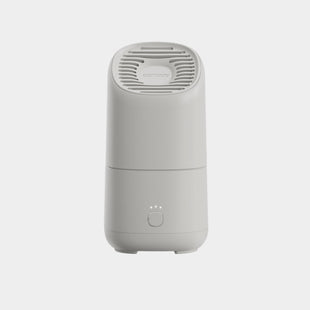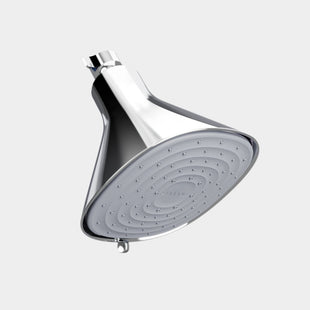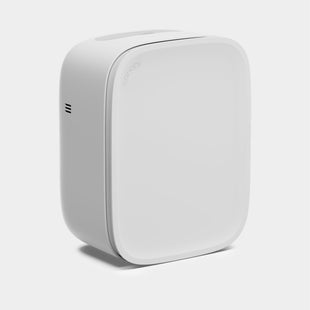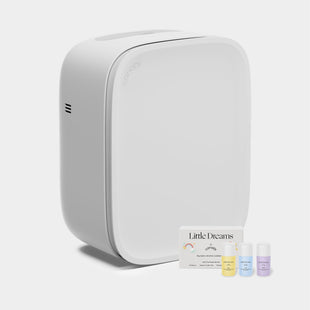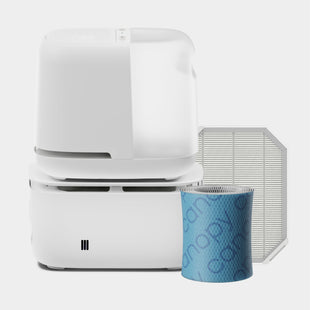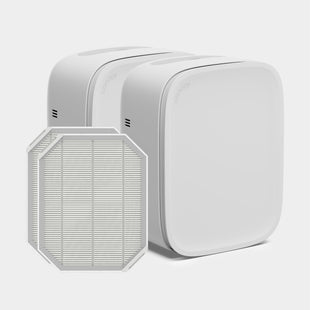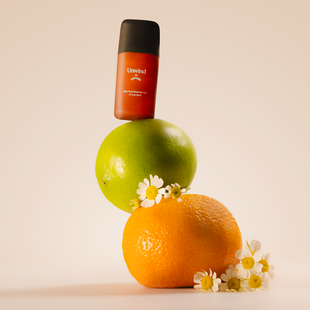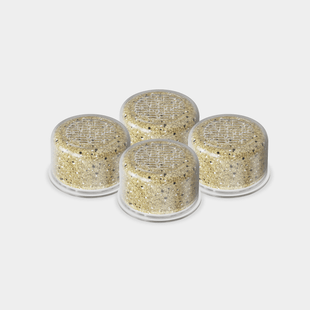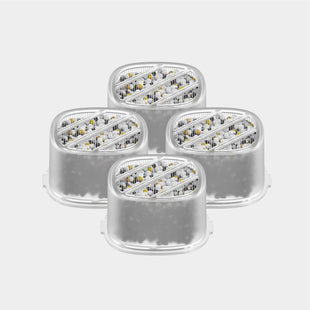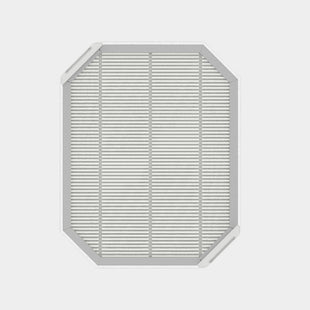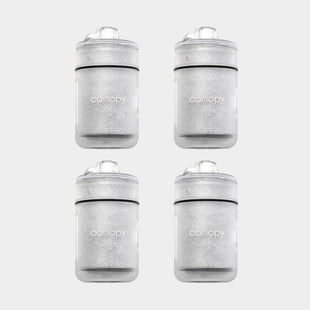This content has been reviewed and updated on January 5, 2024.
Whether you’re expecting your first child or have been a parent for some time, you’ve likely encountered advice about running a humidifier for your baby. But, as with every decision you make for your child, you’ll want to be as informed as possible when considering whether to add one of these devices to your nursery. What does a humidifier actually do for babies? Let’s find out.
Why Do Babies Need Humidifiers?
While a humidifier may not be quite as much of a necessity as diapers or onesies, it should still be on your list of nursery must-haves. Here’s why: The recommended humidity level for your home is between 40% and 60%, but indoor humidity tends to drop much lower during the winter months. And this can cause a range of uncomfortable side effects, like dry skin and hair, sinus and nasal congestion, and a dry mouth and throat. Since babies are constantly growing and experiencing new things for the first time, these discomforts can feel much more serious and disruptive.
The primary purpose of a humidifier is to replace moisture in the air that is lost because of the weather or seasonality. By replenishing moisture levels in your home, you can help your baby feel their best year-round.
3 Humidifier Benefits for Babies
1. Prevent Dry Skin
A baby’s skin is much more delicate than an adult’s. It’s thinner and more porous, making it more sensitive to irritants and harsh environments—including dry air. Many babies are also prone to skin issues that can be exacerbated by dryness, like eczema and cradle cap.
Fortunately, running a humidifier can help address these issues. The device restores optimal moisture levels in your baby’s room and reduces transepidermal water loss (TEWL), allowing their skin to retain moisture. TEWL is the process of the skin releasing water into the environment through evaporation. Dry conditions can accelerate TEWL, while humid environments can decrease it. A humidifier can also help combat eczema flare-ups and symptoms of cradle cap since these conditions are aggravated by dry air.
2. Reduce Congestion
Cold medicine isn’t recommended for children under the age of 2, but many babies will still encounter the common cold. Likewise, allergies can also produce frustrating symptoms in young children. As a parent, it’s frustrating to watch your child suffer through symptoms. To deliver relief, you’ll need to rely on baby-safe techniques, like using saline spray and providing sufficient hydration.
One effective way to alleviate congestion in babies is to use a humidifier. This technique is backed by pediatricians for thinning mucus and controlling cough. The device works by delivering a steady supply of soothing, moist air to keep nasal passages and airways hydrated. Dry air, on the other hand, can cause the membranes in babies’ nasal passageways to become swollen and irritated, leading to stuffiness. Running a humidifier in your baby’s room can help prevent or control the frustrating symptoms of congestion, leading to a better night of sleep for everyone.
3. Create a Sleep-Ready Atmosphere

You may already know that babies love white noise. Having a steady, soothing sound can help mimic the environment of the womb, which is surprisingly noisy. White noise can also muffle sounds throughout the rest of the house. While some parents choose to use a sound machine for this purpose, a humidifier can double as a white noise machine. The device produces a low, soothing hum as it delivers clean, properly humidified air throughout the nursery. And, unlike other machines that can mistakenly be turned up too loud, it won’t exceed recommended volume limits: Up to 50 decibels is considered safe for babies.
Best Practices for Using a Humidifier for Babies
While humidifier benefits for babies are clear and compelling, it’s still important to adhere to some best practices while using the device. Here are a few simple tips to bear in mind.
Choose the Right Device
The best humidifier for babies will be a cool-mist evaporative device. The American Academy of Pediatrics (AAP) warns parents of the potential dangers regarding the use of a warm mist humidifier for infants and young children, including burns from boiling water. Vaporized water looks interesting to little ones, and they may try to reach for it, introducing the risk of serious injuries. The Academy, therefore, recommends cold or cool-mist humidifiers for nurseries instead.
Some additional nice-to-have perks include compatibility with essential oils and an automatic shut-off feature. The ability to use essential oils in your baby’s humidifier can help further create a soothing environment. Diffusing scents like lavender and vanilla can help lull your little one into restful sleep. And while it goes without saying, an automatic shut-off feature can be helpful for giving sleep-deprived parents one less thing to remember.
Also, consider the humidifier’s size. Ideally, you want the tank to last through the night to ensure your child gets the full benefits of humidifier use. A smaller tank will need multiple water refills throughout the night. You’re probably already getting up with your baby for feedings and changes, so don’t add another task to the middle-of-the-night shuffle. A moderate-sized tank will deliver several hours of uninterrupted use. Our Nursery Humidifier has a 2.5-liter tank for up to 36 hours of running time, meaning fewer fill-ups and hydration for up to 500 square feet of space.
Ensure Cleanliness
Easy clean-up is another important feature to look for. Since humidifiers use water, many models can accumulate mold. An easy-to-clean system can help minimize the risk of mold. Dishwasher-friendly components are especially useful for busy parents. With Canopy, you can simply pop the humidifier’s washable components into the dishwasher once a week for a deep, thorough clean. Coupled with our mold-inhibiting* design inside the humidifier, our humidifier is the cleanest option on the market.
Place With Care
A final but important consideration for your baby’s humidifier is the proper placement. Situate it at least a foot away from walls so moisture doesn’t accumulate, and 3 to 4 feet from the sleep surface to prevent damp bedding. Additionally, secure any wires from the devices so they can’t be accessed by curious hands. Ideally, the device will be placed centrally in the room so the hydrated air can circulate freely.
If you’re a parent, make your baby’s space more comfortable with our Nursery Humidifier. Featuring a sensor to maintain optimal moisture day and night, our system can address common concerns for babies, like dry skin, cough, and congestion. Its components are dishwasher-safe, making cleaning a breeze for busy parents. Try our nursery humidifier in your home to find out why parents and babies alike love it.
*Mold inhibition limited to device interior. Does not treat air or environment. 3rd party lab-tested with Aspergillus niger (ATCC 6275, 16404).

